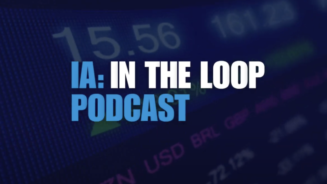The company’s partners were looking for a way to avoid a deficit in its CHF1.4bn ($1.55bn, £933.3m) pension scheme, and embarked on seeking the most appropriate asset allocation model.
“The whole genesis of the approach was driven by the pension scheme,” says Stephane Monier, chief investment officer of Lombard Odier Private Bank.
“Because the firm is a partnership, the partners would be personally responsible for any deficit. That focuses the mind. The scheme was well funded but the crisis of 2008 had a negative impact on the ratio of the pension fund. Before it went below 100, the partners decided to immunise it [against losses], and asked the investment team to think about a better way of managing the fund.”
Nine months later they presented their research to the board of trustees and a new method of risk-based allocation has been used companywide since 2009.
“We thought our clients would benefit so we extended it to both institutional and private clients, including expats,” says Monier.
A risk-based approach
“If you look at recent financial history, the crisis of 2008 was a crisis of an excess of debt. There were two solutions. On one side, the authorities could have let people default and get into a depression. The other was in the first instance to transfer private debt onto the balance sheet of governments, then on to central banks.
It was a very innovative approach. We’re now at an interesting point in time where some of the accommodation given by central banks will be removed in 2014, so we are in uncharted territory.”
What is also important, says Monier, is the amount of liquidity brought by central banks in the system has pushed the price of assets up.
“We consider the current market environment to be quite risky. The risk premium of asset classes is very low. The reward from exposure to financial assets going forward will not be huge. Over the last few crises the correlation between asset classes has been increasing at the time of crisis. In the mini crisis in May and June this year, with the talk about tapering, all assets went down.”
In practice, the traditional approach of allocating 60% of a portfolio to equities and 40% to bonds in periods of growth, and then flipping that allocation in a downturn, no longer delivers consistent returns, in Lombard Odier’s view.
These period adjustments might move the allocations 5% over or underweight, depending on market conditions, but they leave investors vulnerable, with actual returns significantly different from what was expected and portfolios that struggle to build stable exposure to the market. The firm believes this kind of thinking is not dynamic enough to cope with today’s markets.
The big three
Instead Lombard Odier selects three types of strategies which it categorises as smart beta, high conviction and absolute return.
Smart beta gives the portfolio exposure to the market without tracking flawed conventional benchmarks and concentrating on coping better with market volatility. High conviction strategies are long-only products combining beta with alpha and applying tools to understand the contribution of each. Absolute return long/short strategies are used for the larger proportion of a portfolio because they provide uncorrelated returns which add diversification.
Another important element of this risk-based investing approach is to manage drawdowns, both systematically and dynamically.
In order to build an effective portfolio, Monier believes one needs to find sources of assets which are uncorrelated and linked to manager skill and alpha.
“The first important element is allocation. You want as much as possible in absolute return and as little as possible in long-only, but you have to be realistic. That is impractical.
"Some absolute return funds are selling beta in a disguised form. We need to ensure that if we incorporate an absolute return strategy, its value proposition for clients is interesting. We need to find other sources of uncorrelated returns.
"We have developed a quant tool that allows us to screen absolute return strategies and see their exposure to various risk factors. We can check on a return basis and run regressions to see if it is correlated or not from a holdings perspective.”
Lombard Odier’s asset allocation model starts with a long-term, strategic risk allocation to six asset classes. This is then translated into the capital allocation based on the firm’s view on prevailing market conditions and the risk attributes of each of those asset classes at any point in time – less risky assets will typically get a larger allocation.
While the risk allocation remains largely static, the capital allocation is more tactical.
At the current point in time, around 30% of Lombard Odier’s expat portfolios are in absolute return strategies, with 70% in long-only.
“It’s difficult to make a bet on when [fiscal] accommodation will return,” says Monier. “Most people allocate on the basis of capital. We think that’s a mistake. We allocate equally to sovereign bonds, credit, developed equities, emerging equities and commodities in risk terms, but then if we adjust this by risk measures, in terms of capital allocation sovereign bonds get a bigger slice of the pie. They’re less risky than, for example, emerging market equities.”
In Monier’s view, Lombard Odier’s risk-based allocation approach has delivered what it was meant to do, as well as smoothing returns with no large drawdowns.
“We’ve seen solid performance in line with objectives. I think the environment we’re entering now makes it even more appropriate for that methodology. It doesn’t require us to make a big bet. The removal of [fiscal] accommodation will create extreme situations and you need to manage more aggressively than in good years.”
A balancing act
“If you look at the correlation between asset classes and the type of environment where they perform well, in the past 100 years economic growth has been accelerating only 40% of the time,” Monier continues. “40% of the time growth has been decelerating and 20% has been an inflationary period. If you’re agnostic to start with, you should start with 40% of the portfolio in assets which will perform well when the economy is growing, 40% which will perform when it’s decelerating, and 20% which will benefit from inflation.
So the risk allocation does not move around – what moves around is the capital allocation. When there is a crisis and volatility goes up, you reduce your allocation to risk assets and the level of cash increases. The market and the changes in it dictate your capital allocation. Being a lot more reactive is more appropriate for the future. We rebalance a portfolio on a daily basis – if the risk of an asset class breaches a certain threshold then its weight in the portfolio changes on the same day.”
Lombard Odier is happy to tailor solutions based on the needs of individual expat clients. “They may have different needs to a domestic client,” says Monier. “We do an exercise to determine the tolerance of clients to negative performance. It’s important to start that way. By asking how much they can afford to lose we invert the risk/return paradigm. We look at what return we can give for the risk they’re willing to take.”
For Lombard Odier there are two important elements in terms of what it can do for clients, says Monier.
We’re trying to build wealth for the long term. We have expats in places where there’s no pension provision so this amount needs to be maximised over the long run. But people tend to look at their financial statement over the short term. As we don’t want them to change strategy, it’s important to have an investment plan that will not lose more money than the client will accept in any given year.”




